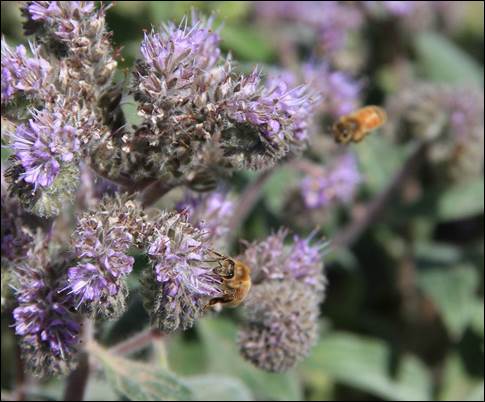Agricultural Pesticides and Bees
Honey bees can come into direct contact with pesticides through wind drifting of sprayed or dusted products. They are also exposed to pesticides in the form of residues on blooming crops and weeds, and in contaminated water sources.
Because honey bees routinely fly several miles from the hive to visit flowers, bee protection is the responsibility of all agricultural producers, regardless of property boundaries.
Reducing hazards for beekeepers
- Get insect or weed problems properly identified before proceeding with spraying – this can save you money by minimizing the quantity of pesticide you use, and can prevent pointless product applications.
- Read product labels carefully for specific bee warnings and application instructions.
- Although you may not have bees yourself, be aware of neighboring apiaries and communicate clearly with the owners whenever you make a pesticide application. Bees routinely fly over a radius of three miles for flowers.
- Apply pesticides before crops and weeds bloom whenever possible.
- Spray in the early morning or late evening when bees are less active.
- Beware of spray drift during windy conditions, and avoid dusts when possible as they carry a long ways under very low-wind conditions.
- Beekeepers can site their apiaries for low pesticide risk, by considering predominant wind direction and proximity to routinely treated areas.
- Beekeepers should move their bees if needed, at least three miles away from original site to prevent bees from returning there.

This data sheet from Purdue has an extensive listing of active ingredients (including some trade names) for many commonly-used pesticides in agriculture with information on relative toxicity to honey bees: http://extension.entm.purdue.edu/publications/E-53.pdf
